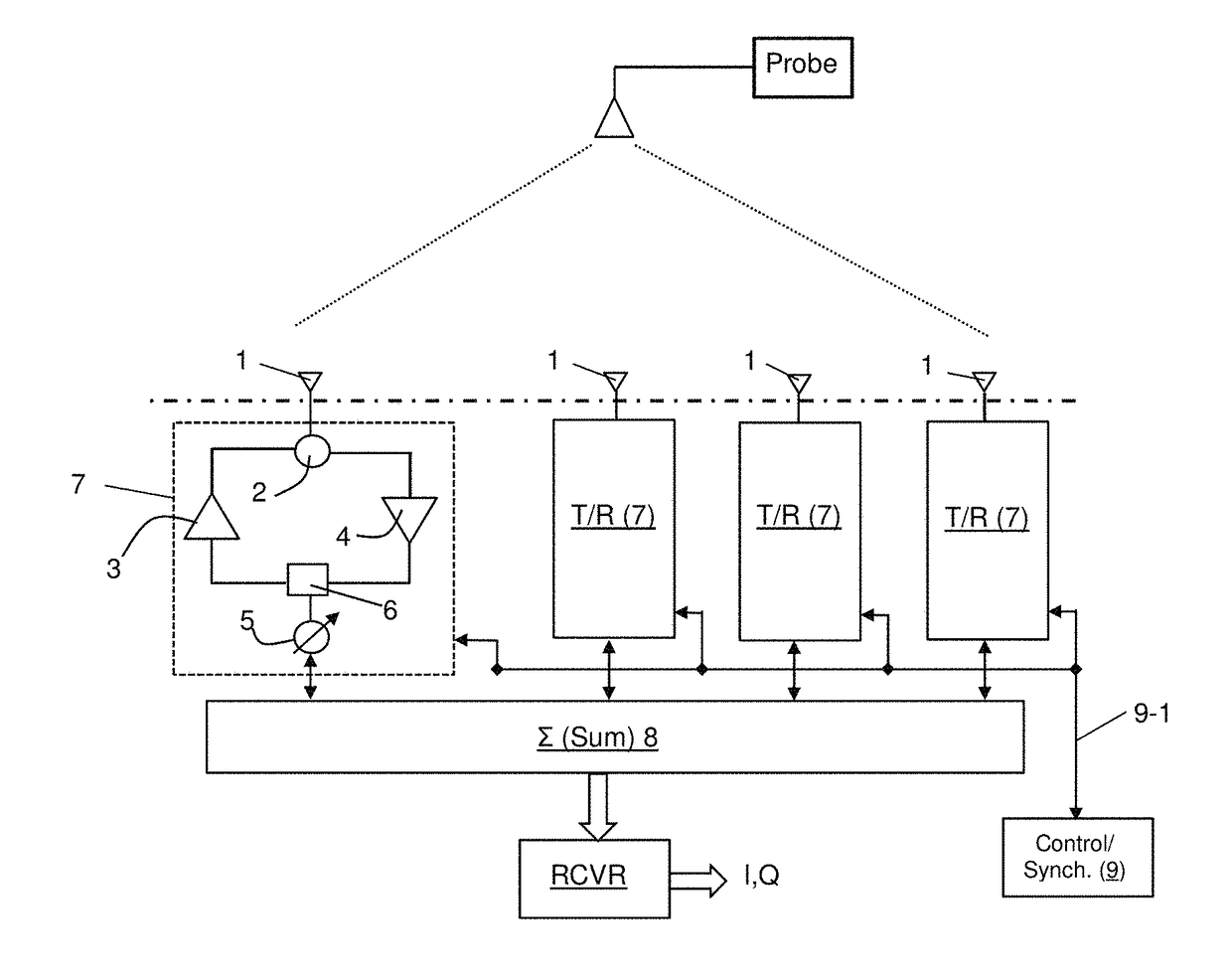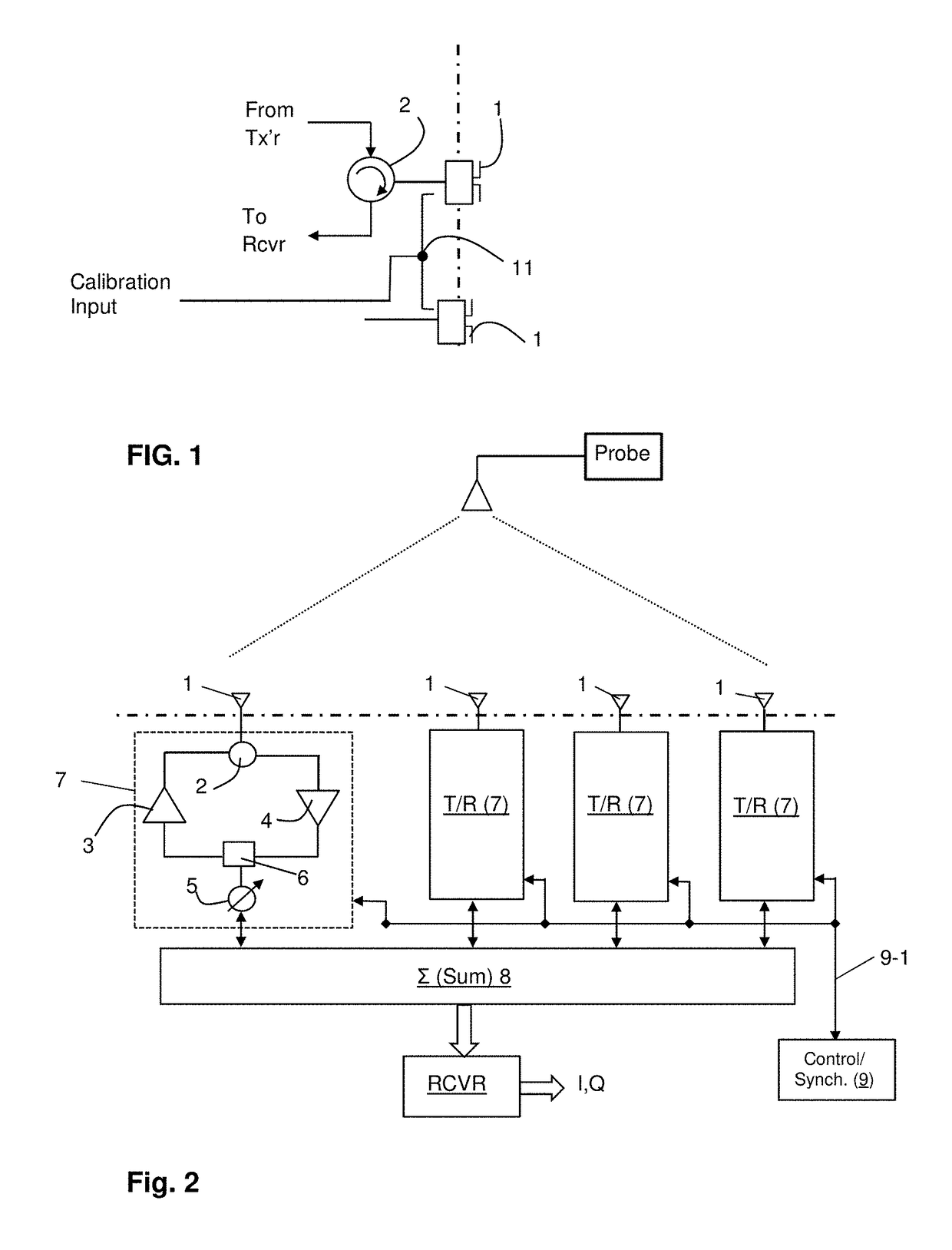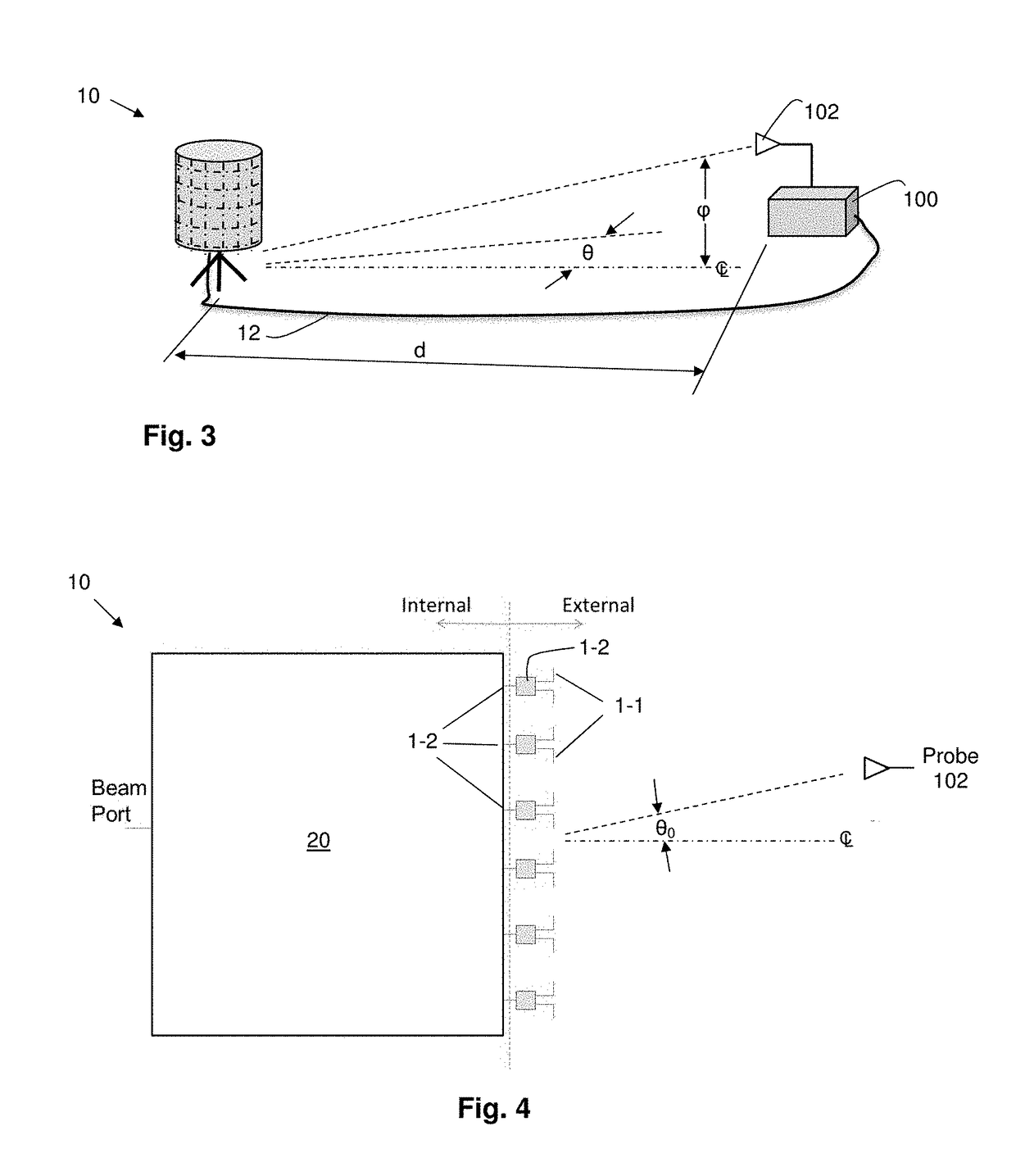On-site calibration of array antenna systems
a technology of array antenna and array antenna, applied in the field of array antenna, can solve the problems of affecting the accuracy of array antenna, so as to achieve the effect of convenient operation
- Summary
- Abstract
- Description
- Claims
- Application Information
AI Technical Summary
Benefits of technology
Problems solved by technology
Method used
Image
Examples
Embodiment Construction
[0068]Reference will now be made in detail to the present exemplary embodiments of the invention, examples of which are illustrated in the accompanying drawings. Wherever possible, the same reference numbers will be used throughout the drawings to refer to the same or like parts. An exemplary embodiment of the radar calibration system of the present invention is shown in FIG. 3, and is designated generally throughout by reference numeral 10.
[0069]As embodied herein, and depicted in FIG. 3, a diagrammatic depiction of an array calibration set-up in accordance with one embodiment of the present invention is disclosed. The array under test 10 is coupled to a test probe 100 by a communications link 12. The array 10 is shown as a non-planar array, but it should be appreciated that the present invention may be employed in a system that includes a planar phased array antenna. The probe need only be positioned at only one well surveyed point as part of updating the calibration; thus, the lo...
PUM
 Login to View More
Login to View More Abstract
Description
Claims
Application Information
 Login to View More
Login to View More - R&D
- Intellectual Property
- Life Sciences
- Materials
- Tech Scout
- Unparalleled Data Quality
- Higher Quality Content
- 60% Fewer Hallucinations
Browse by: Latest US Patents, China's latest patents, Technical Efficacy Thesaurus, Application Domain, Technology Topic, Popular Technical Reports.
© 2025 PatSnap. All rights reserved.Legal|Privacy policy|Modern Slavery Act Transparency Statement|Sitemap|About US| Contact US: help@patsnap.com



